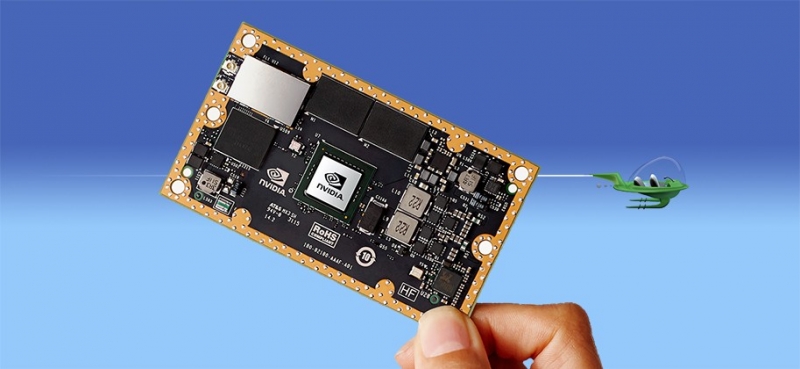
People sometimes forget that Nvidia does more than just graphics cards, and the latest area that the company is expanding into involves improving the computing capabilities and AI functions of drones and robots. While this may sound a bit Skynet-like, the company has assured people that the technology will be used for good; Nvidia says it could enable drones to scan crowds to “identify suspicious activity,” or to help them “navigate through a forest for search and rescue.”
The company’s new Jetson TX1 developer kit is a credit card-sized supercomputer that will “enable a new generation of incredibly capable autonomous devices," says Deepu Tallia, vice president and general manager of the Tegra business at Nvidia. "They will navigate on their own, recognize objects and faces, and become increasingly intelligent through machine learning. It will enable developers to create industry-changing products."
Jesse Clayton, product manager at Nvidia, said that as well as having better recognition capabilities, robots and drones will also be able avoid collisions using deep learning algorithms and image processing engines on the board. The TX1, which replaces last year’s Nvidia TK1, offers 1 teraflop of performance alongside its 256 graphic cores to process images. The board could also connect to powerful cloud services for post-processing of images, Clayton said.
Nvidia’s developer kit for the TX1 includes, amongst other things, a debugger, compiler and libraries. Launch partners include the Massachusetts Institute of Technology, Kespry, Herta, Percepto and Stereolabs. The board’s full specs are as follows:
- GPU: 1 teraflops, 256-core Maxwell architecture-based GPU offering best-in-class performance
- CPU: 64-bit ARM A57 CPUs
- Video: 4K video encode and decode
- Camera: Support for 1400 megapixels/second
- Memory: 4GB LPDDR4; 25.6 gigabits/second
- Storage: 16GB eMMC
- Wi-Fi/Bluetooth: 802.11ac 2x2 Bluetooth ready
- Networking: 1GB Ethernet
- OS Support: Linux for Tegra
- Size: 50mm x 87mm, slightly smaller than a credit card
The developer kit will be available for preorder in the US from November 12 for $599. It will expand outside the region a few weeks later. The final TX1 module version, which ships without some major components and connectors, will be available early next year at a suggested price of $299 (in quantities of 1000 or more) from distributors around the world.
https://www.techspot.com/news/62745-nvidia-new-jetson-tx1-board-could-enable-new.html

